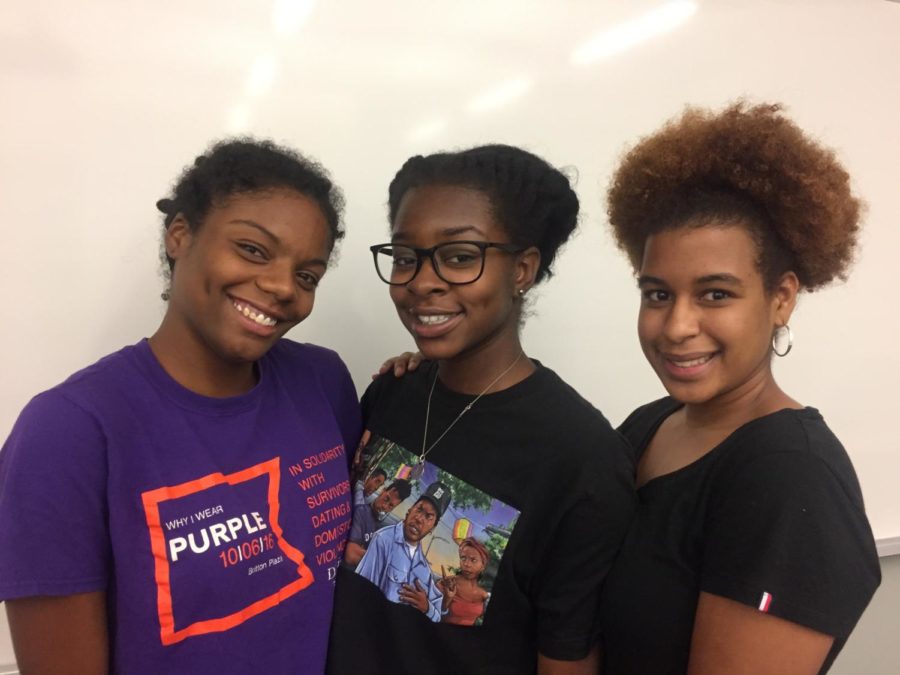Our Hair is Our Crown: Black and Afro-Latina Women and Reactions to their Hair
Black and Afro-Latina women of Dickinson college are living the history that Professor Katie Oliviero taught in her introduction to women, gender and sexuality’s class, in connection to the identity of the hair of Black and Afro-Latina women.
Oliviero said “[Hair] has a whole history behind it that speaks to the power dynamics and power inequalities that particularly impact Black women.”
Some Black and Afro-Latina women of Dickinson spoke with a reporter about their first hand experiences. Reports came from women who are Black, African American, Nigerian and Dominican, with varying class years. The women reflected upon the many reactions they received in response to their hair, within their everyday lives.
Sakinah Hobbs ’20 said that, “Depending on how you have your hair, that’s the kind of comments that you receive” in connection to the variety of styles that are worn by Black and Afro-Latina women.
While Dineydi Matos ’20 said, for her reactions to her hair vary depending on whether she is at school or at home.
The women explained that the hair of Black and Afro-Latina women includes intricate styles and different phases.
Joanne Adebayo ’21 said, “[At] Each and every phase of my life, people saw my hair as either exotic, strange, or abnormal.” Adebayo described the perceptions she received as being based upon her hair being relaxed, natural, or in a protective style.
In discussing the reactions, she received from different people, as her hair was relaxed, Adebayo continued by stating, “They were accepting of it… it was silky, it was straight.” While having a protective style allowed Adebayo to gain a different reaction from her peers. She said, “There have been so many times when people have thought, when I had my braids in, my hair was magical because I had different colors [in it].”
Aisha Johnson ’20 said when it came to her hair, she had “been natural all [her] life.”
Matos said she faced adversity from her family because she is a Dominican woman who wears her hair in its natural state. Her family asks her questions like, “Why is your hair like that?” and “When are you going to go to the hair salon?”
Hobbs described an instance of walking into one of her college courses and having her professor reference her hair as, “The hair.” She continued by saying that her professors would tell her that they did not recognize her when she would change her hair style.
“What are you mixed with? Are you half white?” Naji Thompson ’19 said, as she recollected the different questions people asked her about her hair. She continued by saying,
“I’m perceived as being mixed because my hair happens to [have a] looser [texture].”
Hobbs stated that “Honestly, [some people’s reaction to her hair] makes [her] feel like an outsider.”
Hobbs said that she also experienced pressures to have her hair a certain way for job interviews, “If I had my hair in bantu knots and a twist out…I remember my mom saying, ‘when you are you going to go get your hair done?’”
Hobbs continued to describe her mother’s advice, “The people that are interviewing you, they can judge you because they have a certain reputation and a certain look that’s representing them.”
Thompson described the different variations of Black and Afro-Latina women’s hair by saying, “We look different, we’re not like a cookie cutter race or person.”
Hobbs elaborated by saying, “When I have my hair in a fro, that’s when I’m most prideful.”
Johnson also reported that her natural hair makes her feel “Strong and beautiful because I’ve learned to love my natural hair.”
Adebayo described the identity of the hair of Black and Afro-Latina women as being “Dynamic.” She said that, “Our hair is our crown!”
Matos’s described Black and Afro-Latina women’s hair in three words: “Expression, heritage, and community.”



